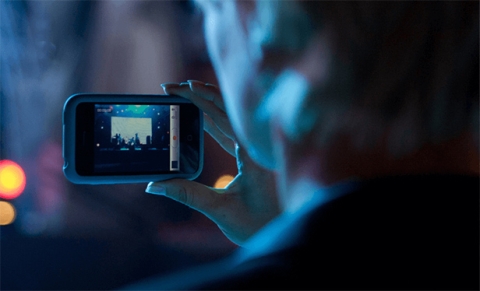Event Professionals Turn to Live Video to Build Buzz

As organic social media reach dwindles and competition for attendees increases, event professionals are increasingly using live streaming on Facebook, Twitter, Instagram and other sites to achieve a number of goals.
Experts expect the live video trend to grow throughout 2018, including mdg President Kimberly Hardcastle-Geddes, who believes that given the experiential nature of trade shows and conferences, it makes perfect sense why live video is so hot right now.
“Video allows us to better engage the senses of our prospects and share stories that will entertain, educate, nurture and ultimately drive attendance,” Hardcastle-Geddes said.
She continued, “Live streaming on Facebook, Instagram, Twitter and Snapchat can build brand awareness, engage audiences, communicate the brand story, bring a value proposition to life, deepen their relationships with prospective and current event participants, and drive first-time and repeat attendance to trade shows and conferences.”
From books to motorcycles to entrepreneurship, events in a wide variety of industries have turned to Facebook Live to meet these goals.
B. Alan Bourgeois, founder and producer of seven book festivals around Texas, uses Facebook Live during events to gain more traction prospective attendees and to promote the authors that are spending their money to attend.
“We then post the videos on our website to continue to promote them,” Bourgeois said. “In addition, the vendors promote the page, which gives us more exposure and continues to increase attendance in the following years.”
The Progressive International Motorcycle Shows (IMS) uses Facebook Live to give motorcycle enthusiasts a real-time look at what’s happening onsite at the events.
“The goal is to broaden our social reach beyond the geographies that we visit with each show while also attracting new attendees and fans,” said Meredith Loza, IMS marketing manager.
She continued, “We use Facebook Live for demonstrations on how to customize and maintain your motorcycle and in-depth interviews with custom motorcycle builders and industry experts. We also plan to use it at our next show to give viewers a closer look at new motorcycle models from key manufacturers before our doors even open.”
Laura Gallagher, president of The Creative Company, used Facebook Live to kick off a full day conference celebrating Women’s Entrepreneurship Day in Wisconsin.
“The benefit of doing Facebook Live at a paid-for event is to bring in additional viewers and spectators,” she explained.
UBM SWIMLESSONS, an educational forum that provides fashion brands with business growth tools, has used Facebook Live on multiple occasions.
“We had two main goals for using Facebook Live: to expand the reach of the seminar beyond the trade show floor and to utilize our show’s Facebook accounts as a hub of educational information that could be referenced by brands, retailers and industry insiders throughout the season and year,” explained Mike Alic, managing director of Fashion Group.
While the benefits of live video are abundant, challenges surround creating the right experience for the audience, including sound and video quality issues in a big show setting.
“I think it works best when the camera and its subject are closer together,” Gallagher said. “My preference is that we are within six feet of one another at most (and) in a smaller room it’s easier to control the acoustics and position yourself closer to the stage.”
mdg, which manages live social video for its clients, has discovered a few best practices for producing and overcoming the challenges of live video.
“It starts with having the right equipment, which often includes a stabilizer, a portable backdrop and a mic and twice the Internet speed technically required,” explained Hardcastle-Geddes.
She added, “But more important is the strategy that sets the course for the video. It’s important to consider the overall objectives and how will live video contribute to them.”
Alic also stressed the importance of ensuring reliable Internet connection.
“Our main takeaways from implementing Facebook Live was the need for a hardline for internet, as Wi-Fi can be unreliable in large venues,” he said.
Another critical factor in creating successful live video is pre-promotion to ensure the target audience is aware a live video is coming. mdg subscribes to this tactic for each of its videos.
“Our teams write intriguing, accurate descriptions of what is to come and let audiences know when the live broadcast will begin – obvious steps that are often overlooked,” Hardcastle-Geddes said.
Besides heavily promoting its Facebook Live presence across its social media channels, blog and website, UBM SWIMLESSONS found that putting budget dollars into pre-promotion can expand results even further.
“We learned that sponsored posts for Facebook Live can reach a very large audience,” Alic said.
Using live video streaming can help event planners achieve their brand-building and attendance goals in new ways. At this time, Facebook Live appears to be the preferred platform for live video streaming, as it offers an easy way for events to connect with the audiences they’ve spent so much time and resources building. As this trend grows, the industry will likely develop best practices that will enable the creation of more highly-engaging content.


Add new comment